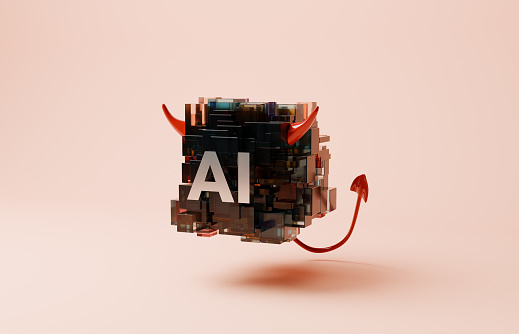A few weeks ago, we noted in our weekly commentary that it was “prove it” time for stocks claiming to have a big AI story front and center in their business propositions, observing as well that one of the key investment themes we wrote about in our annual outlook back in January was how the AI narrative was going to evolve from the hype and frenzy of 2023 to a more sober appraisal of its business use cases. Right on cue, a newfound sobriety in AI scrutiny appears to have found its way into the mainstream conversation among the financial chattering class.
The Trillion-Dollar Question
Perhaps nothing says, “financial mainstream” quite like Goldman Sachs, and so it is perhaps appropriate that a recent Global Macro Research report from that firm devotes its entirety to the question of whether Generative AI in particular is delivering on all the promises and, in particular, on all the dollars being spent on its development. This report, refreshingly, does not “talk the book” by pitching a single point of view, but rather invites a wide spectrum of opinion ranging from world-beating optimism to terse skepticism about what all that capital investment – reckoned to run to $1 trillion or so just in the next several years – is likely to accomplish. As Jim Covello, Goldman’s head of equity research, bluntly puts it: “What $1 trillion problem will AI solve?”
What New Thing?
The one thing that most people appear to agree on, and one of the key arguments we made in our January outlook, was that the so-called “killer app” has not yet appeared, eighteen months after the novelty of ChatGPT ignited the mania around GenAI. Yes – ChatGPT can write for you a Shakespearian sonnet in the humorous vein of Kevin Hart, if that happens to be what hits your fancy today. But GenAI has not yet reached anything close to a critical mass of adoption rates among businesses outside of a few very large players in a small number of business sectors. Prior generations of technology’s “new thing” have had their killer apps: enterprise resource planning software in the 1990s, search and e-commerce in the first generation of the commercial Internet, and all the innovations and diversions, like social media, made possible by the rise of cloud computing in the 2010s. Not all these revolutions translated directly into increased productivity, but they all played a part in transforming the way we think, work and play in the 24-hour cycles of our quotidian existences.
Market Priorities
As we noted in our commentary a few weeks ago, this absence to date of a killer app has important implications for near-term equity market prospects, given the outsize role AI continues to play as a driver of market performance. The market seems to have taken note of the current chatter and second-guessing about AI, with some of the biggest outperformers of the past twelve months seeing significant pullbacks as investors rotate into other, long-suffering parts of the market like deep value and small caps.
These recent reversals are more likely technical and short-term in nature, rather than a more structural shift in fundamentals. Whatever the eventual contribution of GenAI to economic growth and productivity winds up being, there is scant evidence that the furious pace of build-out in AI infrastructure is going to slow down any time soon. That in turn suggests that the “picks and shovels” names, primarily the semiconductors and related businesses, will likely continue to show outsize sales and earnings growth. Companies that stand to benefit from the expected surge in demand for load from the power grid, such as utilities, may just be at the beginning of an uptrend (though this is likely to be a tricky area given the stringent regulatory environment in which utilities operate and the daunting challenge of building out sufficient capacity to meet the rise in demand).
How long this trend lasts will depend in large part on what happens downstream from the infrastructure and power generation activity – and that, of course, goes back to the question of when or if that killer AI app makes itself known. The more we learn about AI, it seems, the more questions we have about where it is all headed. It’s going to be interesting, to say the least.
Original Post
Editor’s Note: The summary bullets for this article were chosen by Seeking Alpha editors.
Read the full article here









